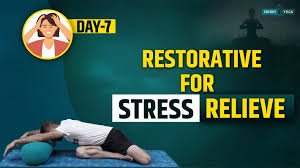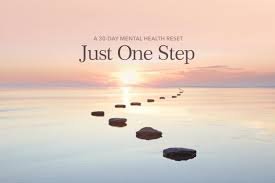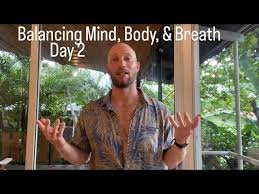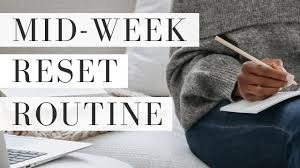
Understanding Stress in Daily Life
Stress is not always bad. Short bursts can push us to finish tasks, perform in exams, or escape danger. But chronic stress the kind that lingers for weeks or months harms the body. It can:
- Increase blood pressure
- Disturb sleep cycles
- Cause mood swings and irritability
- Lower immunity
- Lead to anxiety, depression, or burnout
Because of these risks, finding healthy, natural methods of stress management is essential. Yoga and music therapy are two practices that address both the physical and emotional sides of stress.
What Is Yoga Therapy

Yoga therapy is more than a workout. It blends postures (asanas), breathing (pranayama), and meditation to restore balance in body and mind. Unlike general yoga classes, yoga therapy can be tailored to an individual’s needs, such as:
- Reducing tension in shoulders and back
- Improving lung capacity through breathing
- Managing anxiety with mindfulness and relaxation
What Is Music Therapy

Music therapy uses sound to support healing. It can involve:
- Listening to soothing music
- Singing or chanting
- Playing simple instruments (like drums or sound bowls)
- Guided sound sessions with a therapist
Music affects brain waves and emotions directly, making it one of the fastest ways to shift mood and reduce stress.
How Yoga Reduces Stress

Yoga works in multiple ways:
- Balances hormones: Reduces cortisol and adrenaline, which are linked to stress.
- Relaxes muscles: Gentle stretches release built-up tension.
- Improves breathing: Deep, mindful breath calms the nervous system.
- Focuses the mind: Meditation and mindfulness reduce overthinking.
- Boosts resilience: Regular practice makes the body and mind less reactive to stress.
How Music Therapy Reduces Stress
Music therapy soothes stress by:
- Slowing heart rate and breathing with calm rhythms.
- Distracting the mind from negative thoughts.
- Releasing dopamine and endorphins, the brain’s “feel good” chemicals.
- Helping emotional release (crying, smiling, or relaxing through music).
- Improving sleep by calming brain waves before bedtime.
Evidence from Science and Research
Scientific studies support both yoga and music therapy:
- Healthcare workers during COVID-19: Yoga plus music lowered anxiety, depression, and stress scores.
- Students in India: Listening to flute music during yogic breathing reduced stress more than silence.
- Pregnant women: Yoga showed strong stress-relief benefits, and when combined with music, the effects were even greater.
- Older adults: Laughter yoga and music therapy both improved mood and reduced stress; yoga showed slightly stronger results but music was easier to practice at home.
Practical Ways to Use Yoga for Stress Relief

Here are some simple yoga practices:
- Child’s Pose (Balasana): Calms the nervous system.
- Legs Up the Wall (Viparita Karani): Reduces fatigue, promotes relaxation.
- Cat-Cow Stretch: Releases back tension.
- Breathing (Anulom Vilom / Alternate Nostril Breathing): Balances energy.
- Meditation / Yoga Nidra: 10–20 minutes of deep relaxation.
Practical Ways to Use Music Therapy for Stress Relief
You can try:
- Listening to instrumental or classical music before bed.
- Nature sounds (rain, waves, birdsong) while resting.
- Singing or humming a calming song.
- Drumming or rhythm tapping to release stress physically.
- Guided sound baths with Tibetan bowls, bells, or gongs.
How Yoga and Music Work Together

Combining yoga and music enhances stress relief. For example:
- Play soft background music while holding yoga poses.
- Use flute or ambient sounds during breathing practice.
- End yoga sessions with Savasana while listening to calming tracks.
- Meditate with mantra chants supported by gentle instrumental music.
This creates a multi-sensory relaxation experience, calming body and mind at the same time.
Tips for Building a Stress Relief Routine
- Start small: 10 minutes of yoga + 10 minutes of music.
- Pick the right time: Early morning or before bedtime works best.
- Make it regular: Practice daily or at least 3–4 times per week.
- Create a calming space: Use dim lights, candles, or incense.
- Keep it enjoyable: Choose poses and music you actually like.
Challenges and How to Overcome Them
| Challenge | Solution |
|---|---|
| No time | Use short 5-minute breathing + one song |
| Distractions | Use headphones, switch off phone |
| Hard yoga poses | Start with simple restorative yoga |
| Music feels distracting | Try instrumental or nature sounds |
| Lack of consistency | Set reminders or join online classes |
Who Can Benefit Most
Yoga and music therapy are helpful for:
- Students facing exam stress
- Professionals with heavy workloads
- Pregnant women
- Older adults seeking calm and better sleep
- Anyone struggling with anxiety, depression, or restlessness
7 Day Yoga and Music Therapy Stress Relief Plan

Each day takes 20–30 minutes. You can adjust time based on your routine.
Day 1 Gentle Start Relax and Release

- Yoga:
- Child’s Pose (3 mins)
- Cat-Cow Stretch (5 mins)
- Legs Up the Wall (5 mins)
- Music: Soft instrumental piano or flute (10–15 mins)
- Focus: Begin the week with calm breathing and soft music to set a relaxed tone.
Day 2 Breath and Balance

- Yoga:
- Mountain Pose with deep breathing (3 mins)
- Alternate Nostril Breathing (Anulom Vilom, 5 mins)
- Seated Forward Bend (5 mins)
- Music: Nature sounds (rainfall, ocean waves, or birdsong) while breathing
- Focus: Clear the mind, balance emotions, and reduce restlessness.
Day 3 Energy Flow

- Yoga:
- Sun Salutations (5 rounds, about 10 mins)
- Bridge Pose (3 mins)
- Savasana (5 mins)
- Music: Rhythmic drumming or uplifting instrumental music
- Focus: Release built-up tension and boost positive energy.
Day 4 Midweek Reset

- Yoga:
- Standing Forward Fold (3 mins)
- Gentle spinal twists (5 mins)
- Supported Fish Pose (5 mins)
- Music: Soft violin, flute, or ambient tracks
- Focus: Let go of midweek fatigue, restore calmness.
Day 5 Deep Relaxation

- Yoga:
- Reclined Bound Angle Pose (5 mins)
- Alternate Nostril Breathing (5 mins)
- Yoga Nidra (10–15 mins)
- Music: Guided meditation music or Tibetan singing bowls
- Focus: Reach deep relaxation and mental clarity.
Day 6 Mindful Movement

- Yoga:
- Warrior II (3 mins)
- Tree Pose (3 mins each side)
- Seated Forward Bend (5 mins)
- Music: Soft chanting or mantras (e.g., “Om” chants with background tones)
- Focus: Strengthen body and mind while staying centered.
Day 7 Complete Calm

- Yoga:
- Gentle stretches of your choice (5 mins)
- Savasana with mindful breathing (10 mins)
- Music: Calming bedtime playlist — slow flute, piano, or lullaby-style music
- Focus: End the week with stillness, gratitude, and full relaxation.
Final Note
By following this plan:
- Your body stays active but relaxed.
- Your mind shifts from stress to calmness.
- Music enhances every yoga session, turning it into a healing experience.
Even if you don’t have 30 minutes, you can do just one yoga pose + one music track a day, and it will still make a big difference.
Table of Contents
Conclusion
Understanding Stress in Daily Life
What Is Yoga Therapy
What Is Music Therapy
How Yoga Reduces Stress
How Music Therapy Reduces Stress
Evidence from Science and Research
Practical Ways to Use Yoga for Stress Relief
Practical Ways to Use Music Therapy for Stress Relief
How Yoga and Music Work Together
Tips for Building a Stress-Relief Routine
Challenges & How to Overcome Them
Who Can Benefit Most
Conclusion
Stress is unavoidable, but how we manage it makes the difference between burnout and balance. Yoga and music therapy are safe, natural, and highly effective ways to handle stress.Yoga relaxes the body, steadies the breath, and quiets the mind. Music therapy lifts mood, soothes emotions, and restores peace. Together, they form a holistic approach to stress management that fits easily into daily life.Even 20 minutes a day a short yoga practice followed by calming music can refresh the mind, ease anxiety, and build inner strength. In a world that runs fast, these two therapies remind us to pause, breathe, and listen not just to music, but to ourselves.